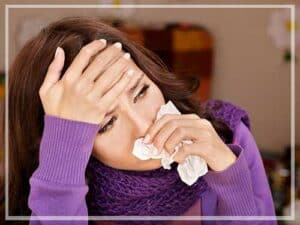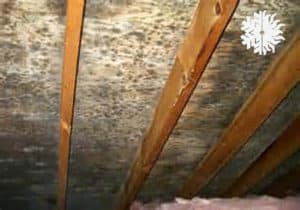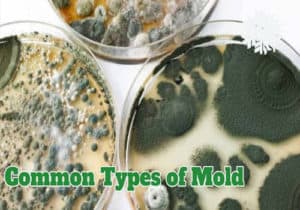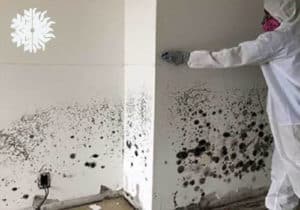Mold can grow on a number of different surfaces, but it favors moist environments with plenty of nutrients to support its growth. Bathrooms are particularly prone to moisture-related problems due to the high frequency of use, as well as the high moisture content in the air from showering and bathing. Additionally, bathrooms are typically small rooms that have poor ventilation making them perfect for mold growth.
Mold is an issue that plagues homeowners every year. Not only do you have to worry about the damage that the mold is going to cause, but also the health risks that it poses. Mold can lead to allergies, asthma attacks, respiratory diseases, fatigue and immune system disorders.
If you suspect that you have mold in your home, then you will want to take care of the problem before it causes any serious health issues or costly repairs. Whether you’re dealing with black mold or green mold, this guide will help you get your bathroom back to the state it was in before.
How To Remove Black Mold From Your Bathroom
Step 1: As with any mold removal project, you must take proper safety precautions to protect yourself and your family. Wear a dust mask, protective gloves, goggles and clothing you don’t mind throwing away afterward. Make sure the room is well-ventilated and avoid any unnecessary exposure to mold spores.
Step 2: You need to clean the area with an antifungal cleaner like Clorox Antifungal Cleaner with Bleach (a 1:10 ratio of bleach to water). Use a scrub brush or sponge, and make sure to get all shower and bathtub surfaces where mold might be growing. Rinse thoroughly with clean water afterward.
Step 3: After cleaning the area with the bleach solution, use an enzyme-based cleaner to eliminate all residue of mold, as well as any other organic matter in the room. Enzyme cleaners can break down organic materials such as mold fungus and are available at most hardware stores.
Rinse thoroughly afterward with clean water, then use a wet vacuum to remove excess moisture from the space. If there is still visible mold after this process, apply more bleach solution and repeat the process until all traces of mold are gone.
Step 4: To prevent mold from returning, spray the entire surface of your shower with distilled white vinegar and let it dry completely before using your shower again. Vinegar is effective at killing mold spores because it’s an acid that reacts with alkaline materials that are found on most bathroom surfaces. The reaction creates fumes that will either kill any remaining mold or slow down its growth until you can treat the area again.
Step 5: After letting the vinegar sit for several hours, wipe down the walls with a cloth or sponge that has been dampened with water. If there is still visible moisture on the surface of your shower after wiping, you may want to repeat this step or use a baking soda to absorb any moisture left.
Here’s what you’ll need to remove bathroom mold
Mold in the bathroom can be a normal part of the environment, particularly in areas that are dank or humid. It’s when mold takes over your bathroom ceiling and tile grout that you need to take action. These products and tools can help you get rid of mold in bathroom areas:
- White vinegar: You can use diluted vinegar to help remove mold and mildew stains from hard surfaces in your bathroom.
- Antifungal Cleanser with Bleach: You can mix bleach with water to kill mold and mildew on bathroom walls and other surfaces.
- Baking soda: This cleaning product will absorb moisture in your bathroom and kill mold spores on hard surfaces.
- Toilet brush: Use a toilet brush for a deep-cleaning mold-removal job on tubs, toilets and shower stalls.
- Enzyme cleaner: Enzyme cleaners have microscopic molecules that work together to break down organic material such as mold.
Natural ways to remove molds in your bathroom
Are you looking for a natural way to get rid of bathroom mold and prevent it from coming back? Luckily, there are a number of simple, effective ways you can remove bathroom mold and prevent it from returning. These natural methods are often safer than commercial products, and they make sense if you don’t want to expose your family or pets to potentially harmful chemicals.
Here’s how to get rid of black mold in your bathroom ceiling naturally:
Use a Hydrogen Peroxide spray bottle to remove the bathroom mold
Hydrogen peroxide is an inexpensive, effective cleaner that works wonders in removing shower mold because it is naturally antifungal and antibacterial. Fill a spray bottle with 3 parts hydrogen peroxide and 1 part water. Spray the shower walls where you see the mold, and let it sit for at least 15 minutes before wiping it away with a sponge or cloth.
Use Baking soda
Baking soda is one of the most common ways to remove mold and mildew. It is highly effective because it is a mild alkali that neutralizes pH levels and causes the spores to die. The mixture will cause the mold to slowly dissolve. Baking soda also absorbs moisture that promotes mold growth, so keeping your bath dry helps prevent mold from growing again when it gets wet again.
To make a solution, mix 2 cups of baking soda with 1 cup of water. If you have white mold, use vinegar instead of water. Spray the solution on all parts of the moldy area and let it sit for 10-15 minutes. Then scrub it away with a sponge or washcloth.
Use white vinegar
White vinegar also works as an effective mold remover cleaning solution because it removes the waxy surface from the mold spores. Although it’s not as potent as hydrogen peroxide, it works just as well at getting rid of milder bathroom molds.
This is because vinegar contains acetic acid, which breaks down the cell walls of molds—causing them to die off. It also reduces the pH level on surfaces so that the spores cannot germinate again. To make a solution, mix 1/2 cup vinegar with 2 cups warm water in a spray bottle, then spray over the affected areas until they’re completely covered with the solution.
Let sit for 30 minutes before scrubbing gently with a brush or cloth. If you want a stronger cleaning solution, you can add more vinegar than water; however, if you do this, we recommend using rubber gloves just to be safe!
How to keep black mold in your bathroom away
If you want to keep your bathroom ceiling and grout mold-free, there are a few simple steps you can take.
- Use a dehumidifier to keep the bathroom dry. Mold needs moisture to grow, so try to keep your bathroom as dry as possible. A dehumidifier is a must for any bathroom, especially if you live in a humid climate. It will help keep the air dry, which will make it harder for mold to grow. If you can, run the dehumidifier 24/7. Make sure it has enough ventilation to exhaust moisture from the room. You can also leave the bathroom door open to ventilate it and make sure the shower curtain completely covers the tub’s drain.
- Use an exhaust fan. If there’s no exhaust fan in your bathroom, install one. This will remove water vapor and humidity from the air while you’re showering or bathing. Make sure to use an exhaust fan with a timer so that it turns on when you do.
- Clean your bathroom weekly. Wipe down surfaces with vinegar or a natural cleaner at least once a week to help prevent mold from growing on those surfaces. By keeping your bathroom clean and well-ventilated, you’ll keep mold from growing in it.
If the problem seems more severe than cleaning can fix, call in a professional. They will be able to assess whether your mold has spread beyond your bathroom walls — and if it has, to treat it effectively and thoroughly.
Frequently Asked Questions
Is bathroom mold dangerous?
There are several mold species, and most aren’t toxic to humans. However, black mold is a toxic mold that is dangerous to humans and requires professional mold removal to prevent accidental exposure and infection. The problem with black mold is that it can cause severe allergic reactions in people who are sensitive to the mold. It is also a public health hazard because it tends to grow on walls and floors creating a toxic environment for anyone who is exposed.
How do you get rid of mold and mildew in the bathroom?
If you notice black mold in places like the grout on your tile floor or in the corners of your shower stall, use an antifungal cleaner with bleach to clean and disinfect the area. Sprinkle the cleaner over the area, then scrub with a brush to really get into all of the nooks and crannies.
To make sure you’ve gotten rid of all the mold and mildew, wipe down any surfaces with a white vinegar solution after scrubbing with an antifungal cleaner. Vinegar will help neutralize any residual mold or mildew spores that may still be hanging around.
How do I determine if I have black mold in my bathroom?
The most obvious sign of black mold is the unique musty or earthy smell that it gives off. If you notice this odor in your bathroom, there’s a good chance you have black mold growing somewhere in the bathroom.
How do I stop mold from growing in my shower?
Mold likes to grow on damp surfaces, so the best way to prevent it from growing in your shower is to keep the humidity level low. The ideal range for preventing mold growth is between 25% and 50%. When the humidity level goes above 50%, it becomes difficult to control mold growth.
To keep mold from returning, make sure your bathroom is well-ventilated during use by leaving a window open or running a fan. If you have an air conditioning system, run it while you’re in the shower or bath. Consider installing an exhaust fan on your roof or wall to help remove moisture from the air and keep mold at bay.






